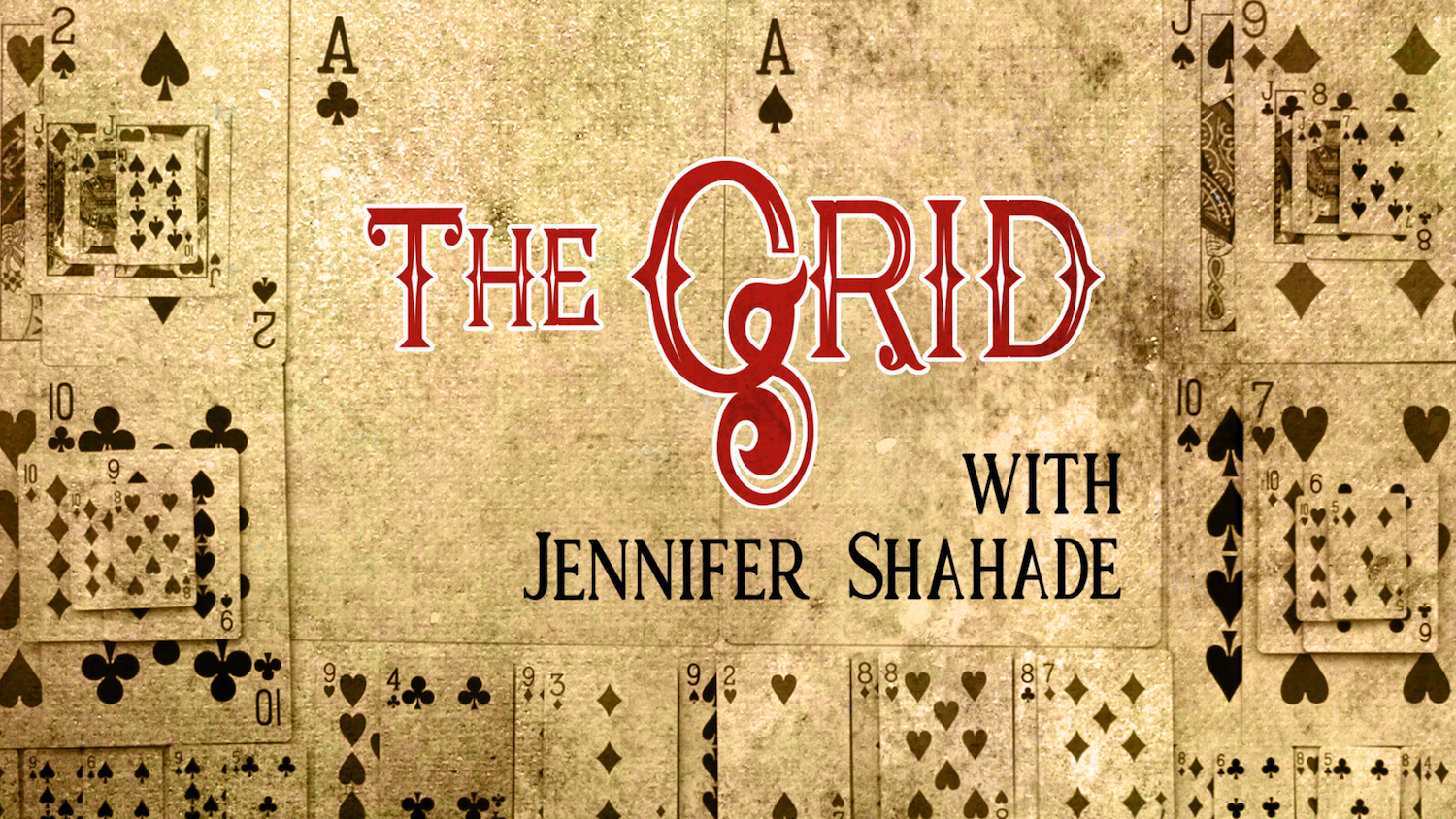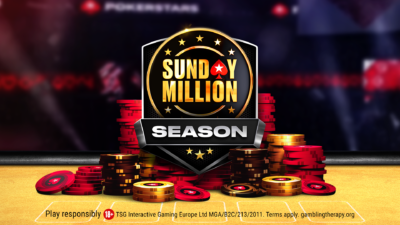We’ve all heard the advice to “think outside the box” as a way to encourage creativity. It’s a nod to the way our routines sometimes constrain us, causing us not to recognize novel, unorthodox approaches to whatever challenges we face.
With her new poker strategy podcast “The Grid,” PokerStars Mind Sports Ambassdor Jennifer Shahade has turned that axiom inside out, in a way, showing how thinking inside the box can in fact be inspiring as well.
169 hands, 169 episodes
Launched earlier this month, Shahade introduces the show as “a 13 x 13 episode journey through every possible no-limit hold’em hand, 169 hands in total, from aces to seven-deuce offsuit.” It’s a fascinating idea — to talk poker strategy one hand at a time, working through all of the different hold’em hands one by one, with a different guest each time sharing a hand history involving the selected hand.
“The fun part of it for me is that it’s like a game within a game,” Shahade explains when recently talking to the PokerStars Blog about the show.
“We’re talking about a game — poker — and a specific hand within poker. But then I also am on a kind of scavenger hunt as the host, as I’m not doing any repeats as I try to hunt down all of these combinations. Which of course is easy now, but will become a little more difficult later on as some of the hands will be reserved.”
To clarify, the 169 hold’em hands represent the 13 pocket pairs (aces through deuces), the 78 unpaired suited hands, and the 78 unpaired offsuit hands. Thus among the non-paired hands, suits aren’t taken into account — e.g., there will be just one episode devoted to ace-five suited, not four separate ones (on A♥ 5♥ , A♦ 5♦ , A♣ 5♣ , and A♠ 5♠ ).
The show thus helps draw attention to the “box” or grid of 169 possible starting hands in hold’em, a learning tool that in recent years has become increasingly familiar to students of the game.


The “Poker Grid” of 169 possible hold’em hands
As a chess player, the two-time U.S. Women’s Chess Champion and Woman Grandmaster is well acquainted with how the 8 x 8 grid that makes up a chess board has long provided the field upon which the game has been studied. That’s one reason why the “poker grid” particularly captured her notice.
However, “it’s only recently in poker that everybody has started talking about the grid,” Shahade points out. “Almost everybody who is a really serious poker player is using some kind of tool that incorporates the grid” such as can be generated by equity calculators and other poker software to analyze hands and specific situations.
“People have always studied using some of those programs, but I feel like they’re becoming much more prominent in the last few years.”
Talking Hand Histories and More
Just three episodes in, the half-hour podcast has already shown how inviting guests on to discuss a particular hold’em hand can produce a variety of discussion topics and strategic insights.
Lex Veldhuis of PokerStars Team Online appeared on Episode No. 1 to discuss K-4 offsuit, his aggressive play of the hand earlier in his career serving as a kind of an emblem of how he used to approach the game, while also helping to clarify how he’s evolved as a player since then both strategically and psychologically.
High-stakes online player Kevin Rabichow next discussed on Episode No. 2 a heads-up hand in which he battled with 10-5 offsuit, with the conversation delving into more nuts-and-bolts talk of heads-up ranges and bluffing. Then in Episode No. 3 Jamie Kerstetter talked about a live cash game hand in which she check-raised the river after flopping a set with A-A and elicited a memorable response from a high-strung opponent.
“I really like the built-in structure in which we talk about the hand, and then talk about other things that are really interesting related to the guest or the grid itself,” says Shahade.
Indeed, after recounting his king-four adventure, Veldhuis discusses further the mental game and its relevance to poker. As part of his discussion, Rabichow addresses some key shifts in poker strategy that have occurred over the last decade (especially online). And Kerstetter shares thoughts about women in poker and how the game can often produce genuinely humorous moments (including many well-suited for sharing over Twitter).
Origins and Inspiration
Earlier this year Shahade began another podcast — “Ladies Knight” — about women in chess, part of the U.S. Chess Federation’s suite of podcasts. That got her thinking about doing a poker podcast as well, and it was while she was at the PokerStars Players Championship in the Bahamas in January that Shahade first settled on the plan for “The Grid.”
That said, ideas leading to the show began much earlier.
“Part of the inspiration was seeded a long time ago,” she explains. “I remember reading a post on Dr. Pauly’s blog many years back about an artist named Kerstin von Gabain who while living in Beijing had this project to try to capture the full deck of abandoned cards in photographs… the full deck of 52.”
The artist eventually had to abandon the project shy of its completion, the needed playing cards having become too difficult to locate. “Obviously it gets exponentially more difficult, because at some point you keep getting repeats,” says Shahade. “I found that really fascinating.”
She’s well aware she’ll face a similar challenge the longer “The Grid” goes. For that she’s counting on the wide ranges of hands played by certain categories of players to help her reach her 169-episode goal.
“I assume I’m going to be able to rely on online and heads-up players to give me pretty much any hand I might need later on in the process,” she laughs.
Shahade was also inspired by wanting to provide a kind of response to those who look upon the “poker grid” and associated ideas of strategy and game theory as unfathomably dull and tedious — those who think such study necessarily omits other, more interesting aspects of the game.
“I think a lot of people think of this grid and this type of studying as being very artless and taking creativity and art away from the game of poker,” she says. “As somebody who really loves math… I find [studying] it very creative and imaginative. So [the show is] also my response to the idea this kind of study is somehow artless and less creative.”


Jennifer Shahade at the 2019 PSPC
Shahade lists “The Thinking Poker Podcast,” Joey Ingram’s “The Poker Life,” Kerstetter and Chad Holloway’s “LFG Podcast,” and “Poker in the Ears” with James Hartigan and Joe Stapleton as poker podcasts she is currently enjoying. Doing both a chess podcast and a poker one has also highlighted for her a big difference between the two, at least as far as talking strategy is concerned.
“I think the advantage that poker podcasts have is that you can follow [the action in a hand history]… and you can really learn from the strategy. In chess it would be really hard to do that, because only the very elite players would be able to follow…. It’s hard to really go over a game in a chess podcast the way you can in a poker podcast.”
Shahade points out that when listening to “The Grid” it’s easy to remember the hand that “Hero” holds — it’s in the episode title! Another plus for listeners — episodes can be listened to out of order, based on listeners’ interest in particular hands or guests.
Thinking Beyond “The Grid”
New episodes are coming out at least every 1-2 weeks, likely more frequently as the WSOP draws near. Upcoming guests will include Maria Konnikova, Matt Matros, and Ryan Laplante.
Even though the show has only just begun, Shahade is already considering possibly exploring the concept and approach in other contexts.
“I am thinking about broadening it to other platforms,” she notes. “This idea of taking that game theory and math-oriented approach to poker and showing how it can actually be freeing and improve your creativity. As a writer and artist, I feel like it’s really important for the sum to be greater than the parts. I feel like with the podcast the structure is already [lending itself to that].”
Whatever future iteration “The Grid” takes, one guiding idea will continue to be a desire to show how studying the poker grid can actually open up our thinking and not close it off.
As Shahade says, “The Grid” provides a way “to coach people that thinking inside the box can help you with your creativity.”
Back to Top








